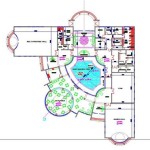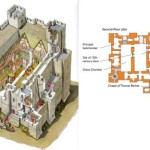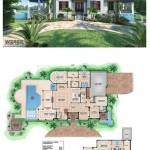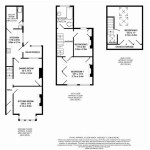Cold Climate House Plans: Designing for Resilience and Efficiency
Building a home in a cold climate presents unique challenges and opportunities. The harsh winters, fluctuating temperatures, and potential for heavy snow and ice require careful consideration during the design and construction phases. Cold climate house plans prioritize energy efficiency, durability, and occupant comfort, often incorporating specific architectural features and building materials to mitigate the effects of extreme weather. This article explores key aspects of designing homes for cold climates, focusing on principles that ensure long-term performance and sustainability.
The primary goal of cold climate house plans is to minimize heat loss, thereby reducing energy consumption and heating costs. This is achieved through a combination of factors, including strategic orientation, effective insulation, airtight construction, and high-performance windows and doors. Proper planning also addresses issues such as snow and ice management, moisture control, and ventilation, all of which contribute to the overall health and longevity of the structure.
Optimizing Building Envelope for Thermal Performance
The building envelope, encompassing the walls, roof, and foundation, plays a crucial role in regulating heat transfer. In cold climates, it is essential to create a well-insulated and airtight envelope to prevent heat from escaping during the winter and from overheating during warmer periods. Several strategies can be employed to achieve this goal.
One key approach is to increase the insulation levels in walls, roofs, and floors. Building codes typically specify minimum insulation requirements based on climate zone, but exceeding these minimums can significantly improve energy efficiency. Options for wall insulation include fiberglass batts, cellulose, spray foam, and rigid foam boards. Roof insulation strategies may involve attic insulation, structural insulated panels (SIPs), or insulated concrete forms (ICFs). Below-grade insulation is also important to prevent heat loss through the foundation.
In addition to insulation, airtightness is critical. Air leaks can account for a significant portion of heat loss, even in well-insulated homes. Air sealing involves carefully sealing gaps and cracks in the building envelope to prevent air infiltration and exfiltration. Common areas for air leaks include around windows and doors, penetrations for pipes and wiring, and joints between building materials. Air sealing can be accomplished using caulking, weather stripping, and specialized tapes and membranes.
High-performance windows and doors are another essential component of an energy-efficient building envelope. These windows and doors typically feature multiple panes of glass, low-emissivity (low-E) coatings, and insulated frames. Low-E coatings reduce heat transfer through the glass, while insulated frames further minimize heat loss. Selecting windows and doors with low U-values (a measure of heat transfer) and high Solar Heat Gain Coefficients (SHGC) appropriate for the climate is crucial for optimizing thermal performance.
Thermal bridging, which occurs when heat travels through conductive materials such as studs or metal framing, can also reduce the effectiveness of insulation. Strategies for minimizing thermal bridging include using staggered studs, incorporating a continuous layer of insulation on the exterior of the walls, or utilizing thermally broken framing components.
Proper ventilation is essential for maintaining indoor air quality and preventing moisture buildup, even in airtight homes. Mechanical ventilation systems, such as heat recovery ventilators (HRVs) or energy recovery ventilators (ERVs), can provide fresh air while recovering heat or energy from the exhaust air. These systems help to maintain a comfortable and healthy indoor environment without sacrificing energy efficiency.
Designing for Snow and Ice Management
In cold climates, snow and ice accumulation can pose significant challenges for homeowners. Heavy snowfall can damage roofs, block access to entrances, and create hazardous walking conditions. Ice dams, which form when melting snow refreezes at the eaves of the roof, can cause water damage to ceilings and walls. Designing for snow and ice management is crucial for preventing these problems.
Roof design is a key consideration. Steeply pitched roofs shed snow more effectively than shallow-sloped roofs. However, steeply pitched roofs may be more susceptible to wind damage. The optimal roof pitch will depend on the specific climate and the anticipated snowfall. Overhangs can help to protect walls from snow and rain, but they must be properly designed to prevent snow from drifting onto decks or walkways.
Ice dams can be prevented by ensuring adequate insulation and ventilation in the attic. Proper attic insulation prevents heat from escaping into the attic and melting snow on the roof. Adequate attic ventilation allows cold air to circulate under the roof, keeping the roof temperature consistent and preventing snow from melting unevenly. Heated roof cables can also be used to melt snow and ice at the eaves of the roof, but this is a less energy-efficient solution.
Proper landscape design can also help to manage snow and ice. Planting trees and shrubs strategically can help to block wind and reduce snow accumulation near the house. Sloping the ground away from the foundation can help to prevent water from pooling around the foundation and freezing. Heated driveways and walkways can melt snow and ice, but this is a costly option.
The orientation of the house can also impact snow and ice accumulation. Orienting the house so that the prevailing winds blow away from the entrance can help to prevent snow from drifting onto the front porch. Similarly, orienting the house so that the south-facing roof receives maximum sunlight can help to melt snow and ice more quickly.
Prioritizing Moisture Control and Durability
Moisture control is essential for maintaining the health and durability of a home in a cold climate. Moisture can lead to mold growth, rot, and structural damage. Cold climates often experience a wide range of humidity levels throughout the year, which can exacerbate moisture problems. Proper design and construction techniques are necessary to prevent moisture from accumulating in the building envelope.
A vapor barrier is a material that restricts the movement of water vapor through the building envelope. In cold climates, the vapor barrier is typically installed on the warm side of the insulation to prevent moisture from diffusing into the wall cavity and condensing. The type of vapor barrier used will depend on the climate and the type of wall construction. In some cases, a vapor-permeable membrane, which allows some moisture to pass through while still restricting air movement, may be more appropriate.
Flashing is a material used to prevent water from entering the building envelope at vulnerable areas such as around windows and doors, at roof valleys, and where the roof meets the wall. Proper flashing details are essential for preventing water damage. Durable and weather-resistant materials should be used for flashing, and the flashing should be properly installed to ensure a watertight seal.
Proper drainage is also important for moisture control. The ground around the foundation should slope away from the house to prevent water from pooling around the foundation. Gutters and downspouts should be installed to collect rainwater and direct it away from the house. French drains can be used to collect groundwater and divert it away from the foundation.
Selecting durable and weather-resistant building materials is essential for ensuring the long-term performance of a home in a cold climate. Materials that are resistant to rot, insect damage, and freeze-thaw cycles should be used for exterior walls, roofs, and foundations. Pressure-treated lumber, concrete, and steel are commonly used for structural components. Durable siding materials such as brick, stone, or fiber cement siding can help to protect the exterior walls from the elements.
Regular maintenance is also important for preventing moisture problems and ensuring the durability of the home. Gutters should be cleaned regularly to prevent clogs. Cracks in the foundation should be repaired promptly. Siding and trim should be painted or stained regularly to protect them from the elements. Addressing minor problems early can prevent them from escalating into more serious and costly issues.
In summary, designing cold climate house plans requires a holistic approach that considers energy efficiency, snow and ice management, and moisture control. By optimizing the building envelope, designing for snow and ice, and prioritizing moisture control, it is possible to create homes that are comfortable, durable, and energy-efficient in even the harshest climates. Careful planning and attention to detail are essential for ensuring the long-term performance and sustainability of these homes.

Passive Design Strategies For Cold Climate

Floor Plans Of The Detached House In A Cold Climate Case Study 1 86 Scientific Diagram

Yzing Climate Comfort In Vernacular Houses Urmia City Cold Table

15 Smart Design Choices For Cold Climates

Winter S Most Wanted House Plans Houseplans Blog Com

Passive Design Strategies For Cold Climate

Natural Building Cob House

Like Our Smallest Creation The Hummingbird H1 New Snowbird 1 Is Just As Cute Offering A P Modern Style House Plans Unique Small Design

15 Smart Design Choices For Cold Climates

Cold Climate Collaboration For An Energy Smart Home Fine Homebuilding








